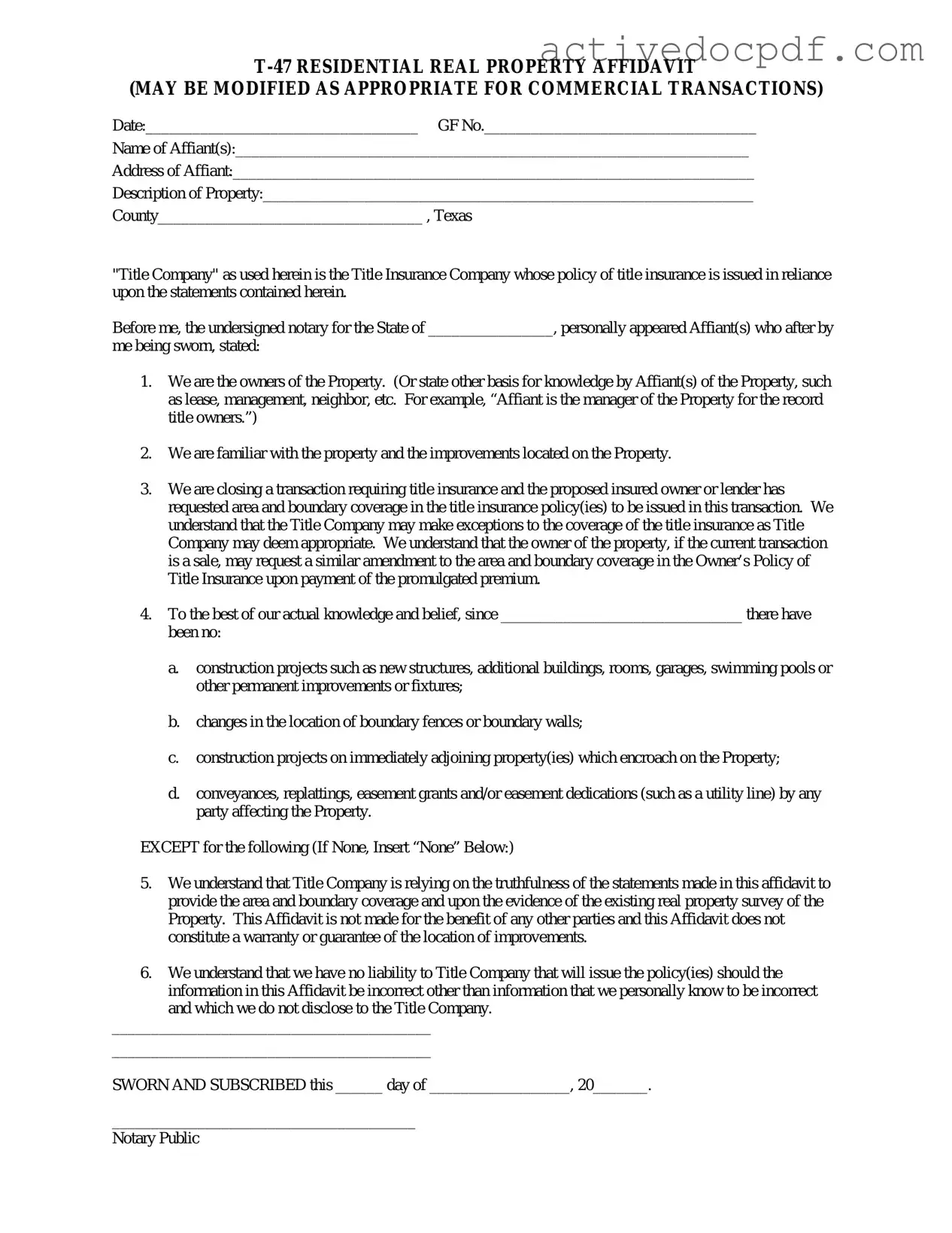Free Texas residential property affidavit T-47 PDF Form
The Texas residential property affidavit T-47 form is a legal document used in real estate transactions to confirm the ownership and status of a property. This affidavit provides essential information to lenders and buyers, ensuring transparency in property dealings. Understanding its purpose and proper use can help streamline the buying or selling process in Texas.
Edit Form Online
